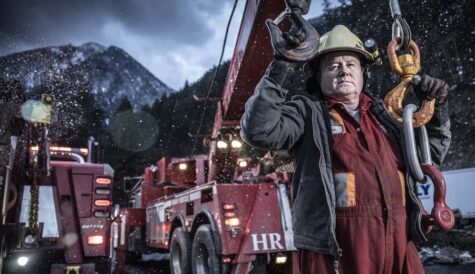Sparks fly at Kidscreen 2007
Kidscreen, the annual NYC get together of the great and the good of the kids TV business, got off to a fiery start this year. Delegates were woken the night before day one by alarms as an electrical fire swept the building and burst pipes, flooding the Nicktoons Lounge, which had been set aside for meetings. Cue numerous jokes, not least from the FDNY, about the need for a Sponge… Bob.
Held the week before the NYC Toy Fair, there were 1,381 attendees this year, a big jump on last year’s 1,088. 483 of those came from outside the US and Kidscreen publisher and conference organiser Brunico said the number of European and Asian delegates was up 61% and 10% respectively.
The show’s conference sessions were dominated by talk of new platforms and pipes. Coming a week after Nick announced the launch of its virtual world, Nicktropolis, the challenges of reaching kids through the internet was a talking point. Jay Goss, CEO of eight-year-old virtual world Whyville, told the assembled crowd that it has reached a stage where it needs to reach out to third party producers.
And, following AOL Kids example, some of the online players are developing projects and reversing into TV. Jens Bachem, ex of TwoWayTV and Atom Films said his company, Digital Outlook, is moving from viral marketing into production. The first property, a South Park-esque toon, is set to follow.
Producers can now bypass the broadcaster and launch sites around a certain character or property. And by exploiting a property online first it is more likely that content creators will be able to hold on to rights. "The good news is the shift in the economic landscape," says Doug Murphy, president of Nelvana Enterprises. "We can deliver content direct to consumers. The multiplatform world is a beacon of light to those having trouble getting space on broadcast."
AOL Kids has managed to negotiate both the online and linear TV worlds. But, amid the complaints from producers about how tough it is to get a property on linear TV, SVP and GM of kids and teens Malcolm Bird (who has since left the company, see p. 6), told delegates that there are tight limits online too.
"There are so many producers making great shows," he said. "The problem I have is we could put 1,000 or even 2,000 new shows up on AOL but I don’t have the promotional inventory. There’s only so many shows we can do justice promotion wise."
Looking ahead, speakers and delegates also grappled with how they could get to grips with Apple TV and iTunes. But, issuing a reality check, Verizon’s director, content and programming, Walter Delph, reminded all present that while there are shifts, most people are still not using the new distribution outlets. In fact, half of US cable homes are still analogue.
The BBC’s children’s controller Richard Deverell also advised caution. "We have to be careful about multiplatform mania," he told delegates. "It depends on the programme, the extent to which other platforms can add value."
Amid the chatter about new platforms there was also talk about actual programmes. In much the same way that big producers and distributors seem to stockpile announcements for MIP TV and MIPCOM, kids players now like to have something to talk up at Kidscreen.
Nick unveiled its first ever international development slate. It comprises five animated projects: Hiro; Oasis; Bacon and Bunk; Super Charlie and Super Lauren and Noodles. Nick’s copro partners include Germany’s TV Loonland, Korea’s Tuba Entertainment, France’s TF1 and the UK’s Brothers McLeod.
Cartoon Network, not to be outdone, was busy talking up its plans for original series and development plans following the recent establishment of a dedicated production hub in London. It is now aiming to source new, original, content from India and other parts of Asia as well as Latin America, execs said.



